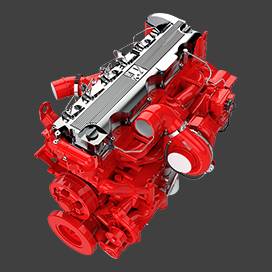Oct . 22, 2024 10:44 Back to list
How to Safely Remove the Rear Brake Drum from Your Vehicle
How to Safely Remove Rear Brake Drums A Step-by-Step Guide
Removing the rear brake drum from a vehicle can seem like a daunting task, especially for those who may not have extensive mechanical experience. However, with the right tools and a clear understanding of the process, you can easily remove a rear brake drum for maintenance or replacement. This guide will take you through the necessary steps to safely and effectively achieve this task.
Understanding the Brake Drum System
Before jumping into the removal process, it’s important to understand what a brake drum is and its role in a vehicle's braking system. The brake drum is a component of the drum brake system, which is typically found on the rear wheels of many vehicles. When you press the brake pedal, brake shoes expand against the inside of the drum, creating friction that slows down the vehicle. Over time, these components can wear out or become damaged, necessitating their removal and replacement.
Tools You'll Need
To successfully remove a rear brake drum, you'll need a few essential tools
1. Jack and Jack Stands To safely lift the vehicle. 2. Lug Wrench For removing the wheel. 3. Brake Drum Puller Depending on how tightly the drum is fitted, this may be necessary. 4. Socket Set To remove mounting bolts or screws. 5. Pliers and Screwdrivers For disconnecting any clips or retaining springs. 6. Brake Cleaner To clean the drum before inspection or installation of new parts. 7. Rags or Towels For cleaning and safety purposes.
Step-by-Step Removal Process
1. Prepare the Vehicle Begin by parking your vehicle on a flat surface and engage the parking brake to prevent rolling. You can also place wheel chocks in front of the front wheels.
2. Loosen the Lug Nuts Using a lug wrench, slightly loosen the lug nuts of the rear wheel while the wheel is still on the ground. This will make it easier to remove the wheel once the vehicle is lifted.
3. Lift the Vehicle Utilize a jack to elevate the rear of the vehicle. Once elevated, place jack stands under the vehicle to provide additional support and ensure safety.
remove rear brake drum

4. Remove the Wheel Fully remove the lug nuts and take off the wheel to expose the brake drum.
5. Inspect the Brake Drum Before proceeding, visually inspect the drum for any obvious signs of wear or damage. This can save you time and effort if you need to procure a replacement.
6. Remove the Brake Drum If the brake drum does not easily slide off the hub, it may be stuck due to rust or debris. A brake drum puller can be used in this case. Attach the puller to the drum and turn the center bolt to slowly pull the drum off the hub.
7. Disconnect Components (if necessary) In some cases, the drum may have additional hardware such as retaining springs or clips that need to be removed. Use pliers and screwdrivers to detach these components before fully removing the drum.
8. Clean and Inspect Once the drum is removed, clean it with brake cleaner to remove any dust or grease before inspecting it closely for wear, cracks, or other damage.
9. Replace or Repair Depending on your inspection, you may need to replace the drum or the brake shoes. If replacing, ensure that all new parts are compatible with your vehicle make and model.
10. Reassemble After completing your work, reinstall the brake drum by sliding it back onto the hub. Reattach any components that were removed, ensuring everything is tight and secure.
11. Reinstall the Wheel Place the wheel back on the hub, hand-tighten the lug nuts, lower the vehicle back to the ground, and then fully tighten the lug nuts in a crisscross pattern for an even fit.
Conclusion
Removing a rear brake drum is an essential skill for anyone looking to maintain their vehicle's braking system. By following these steps carefully, you can accomplish the task effectively and with confidence. Always remember to prioritize safety by using proper tools and taking precautions while working on your vehicle. If you ever feel unsure, don't hesitate to consult a professional mechanic.
-
Your Brake Drum Man: Premium & Reliable Brake Drums for Sale
NewsAug.18,2025
-
ROR Web Development: Build Fast, Scalable, Secure Apps
NewsAug.17,2025
-
Scania Brake Drums: OEM Quality for Optimal Safety & Durability
NewsAug.16,2025
-
R.V.I: Advanced Remote Visual Inspection for Precision
NewsAug.15,2025
-
Discover HYUNDA: Innovative Vehicles, Equipment & Solutions
NewsAug.14,2025
-
R.V.I: Unlock Advanced Insights & Real-time Performance
NewsAug.13,2025
